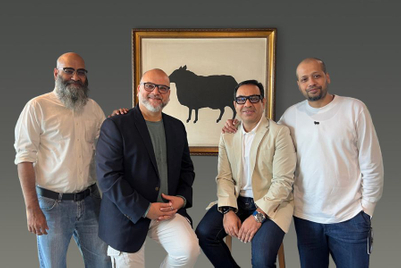
Campaign India delves into the advantages and disadvantages of being an independent agency in the downturn.
Recently Sir Martin Sorrrell, giving the annual lecture of the Stationers’ and Newspaper Makers’ Company in London on the topic ‘Recession. Bath, Shower or Whirlpool -- which is it to be?’ said, “The Goliaths are picking up share while the Davids are under pressure, particularly as credit markets remain frozen.”
‘Goliaths’ here refer to network agencies while the smaller independent agencies are the ‘Davids.”
Campaign India spoke with some of the strongest independents in India and those worldwide about their views on the subject, and got some dramatic, vociferous responses.
“Have you ever sailed? Sails tear, masts break, repairs have to be made with terrific speed while the boat is moving and the waves don’t stop either. Captains and crews who do things by the book will be washed away,” says Scott Goodson, founder & CEO, StrawberryFrog. “The best independent agencies are bored when the sea is calm. We are in our element when things get volatile.”
In difficult times, adaptation; agility and cost control are three parameters most clients seek from their agencies. Independent agencies are nimble. As they are innovative. “Whereas the legacy agencies provide a one- size-fits-all process, independent agencies such as StrawberryFrog, can provide a more customized model,” adds Goodson. “We do not get paid for placing media; we are paid for our ideas. Therefore, we do not recommend TV commercials as the solution for every problem. We develop connections’ strategies and digital strategies. And we are curious about new technology and new solutions to old problems.”
As clients look to consolidate and demand a greater bang for their buck, the cost-effectiveness of an independent agency is also highlighted in a downturn. Adds Jon Wilkins, “Smaller agencies can ride budget cuts and demands as long as they run a tight ship as most independents do; have strong client relationships (again as most do) and act quickly if they need to control costs and margins.”
With so much going for them, is this the time to pitch for new businesses? “It’s a great opportunity to demonstrate collaboration across disciplines and geography. With one P&L you can ensure that you’re doing what’s right for the problems that the clients face, without the bias of personal reward and with the joint objective of competitive advantage for the client,” says Alok Lall, MD, iris India.
While the going may be good for independents, poorly defined or poorly managed smaller agencies could find this period very difficult. Naked’s Wilkins gives some tips to the fellow independents for surviving the slow-down: “Be focused on your core business and your point of difference; manage your costs and infrastructure sensibly - don’t get over -expansionist; love your clients like they were your brother or sister! Dedicate yourselves to helping your clients ride the storm by aligning yourself tightly with them; watch the bigger enemies and identify potential cracks.”
 Scott Goodson, founder & CEO, StrawberryFrog
Scott Goodson, founder & CEO, StrawberryFrog
“Independent modern firms can leapfrog legacy agencies because they are not weighed down by tremendous infrastructures that are not agile and flexible. The value of all WPP companies on Wall Street is less than the value of Google. The headline is innovation is greater than legacy. At SF, we come up with innovative solutions at least five times quicker than legacy agencies. Independent agencies are not beholden to distant holding companies that take all the money for profit. We own the company and we decide where to invest our money; usually in helping clients build their business. We treat their money as if it were our own.”
 Jon Wilkins, founder-partner, Naked Communications
Jon Wilkins, founder-partner, Naked Communications
“Good smaller agencies can manage resource and costs easier and only need one or two client wins to buck the trend and grow. Bigger agencies will normally shrink in line with the economy. Once you become a certain size you become more of an ‘economic bellwether’; you are more likely to directly reflect broader business and economic shifts. There are two polar behaviours of clients in a downturn. Some turn safe and turn to the establishment to ride the storm. Others analyse their relationship with the big agency and realise they can get a better, more cost effective partnership with a smaller, hungrier more entrepreneurial set up.”
 Alok Lall, managing director, iris
Alok Lall, managing director, iris
“Independents are better poised to handle the slowdown because they are more nimble, more client focussed and more accessible. Also they don’t have the agency ‘fat’ that the networks do and can manage costs much better. They can also reorganise faster and better to meet client demands both across discipline and geography. Most large networks are too TV focussed and not very good at actually delivering 360-degree solutions. In fact the agencies that work towards delivering customer delight, no matter what the odds, will shine through. The big boys with all their trappings, red tape and inflated egos don’t seem to get this. ”
 Subhash Kamath, managing partner, BBH India
Subhash Kamath, managing partner, BBH India
“Independent agencies tend to be smaller and more nimble and perhaps are not weighed down by the heavy financial expectations of holding companies. Also, they are very close knit, with shorter communication lines, and the decision making is faster. So it’s relatively easier to experiment with business strategies during a recession and implement them quickly. Shrinking budgets mean a far greater emphasis on effectiveness and accountability of your ideas. At BBH, for example, we constantly talk of ‘ROI = Return on Ideas’, and the focus is always on effectiveness and business growth. Clients are savvy about this.”
 Sajan Raj Kurup, chairman & chief creative officer, Creativeland Asia
Sajan Raj Kurup, chairman & chief creative officer, Creativeland Asia
“Some of the things that work in our favour, in a downturn, would be the fact that we have lower liabilities, lower exposure, moderate overheads and lesser interference from other geographies. What gives us an edge as an independent, in a time such as this, is the fact that we can be nimble footed, judge conditions, change and adapt to circumstances as and when we’d think appropriate. We don’t have to explain, seek permission from, or answer to anybody. Nor do we need to toe anybody’s line. The buck stops righhere and not with some guy sitting half way across the globe who probably has to take a macro look at the world and decide for India. ”







.jpg&h=268&w=401&q=100&v=20250320&c=1)

.png&h=268&w=401&q=100&v=20250320&c=1)
